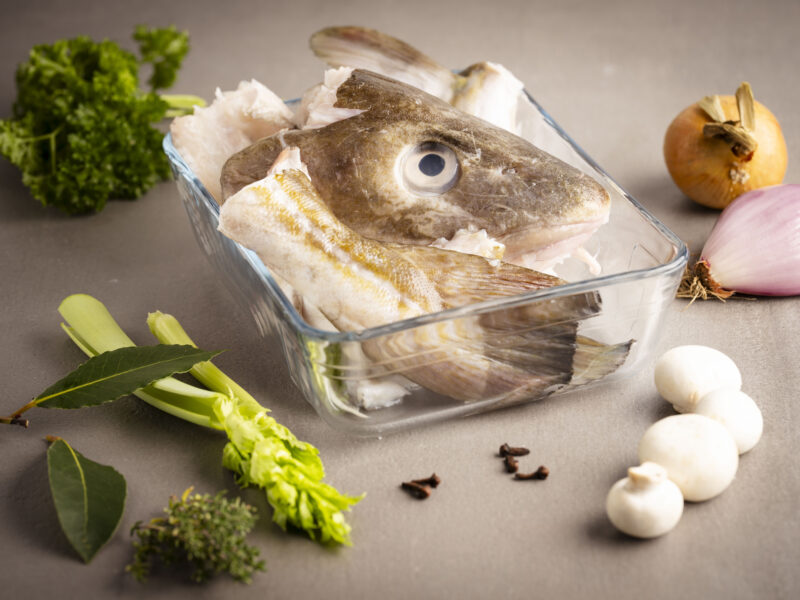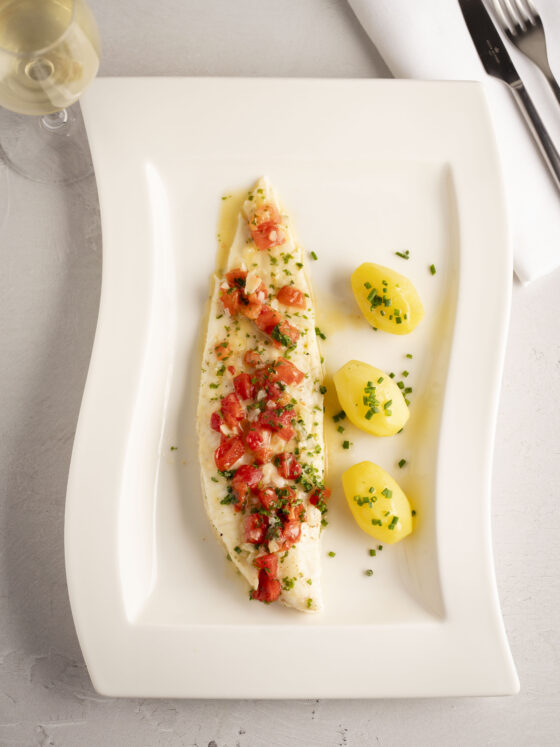Sole à la Dugléré with Champagne – a classic with a sparkling twist
I learned a refined recipe for turbot à la Dugléré with Champagne at Le Cordon Bleu in Paris. At home, I reworked the dish with sole – a sparkling ode to French classics.
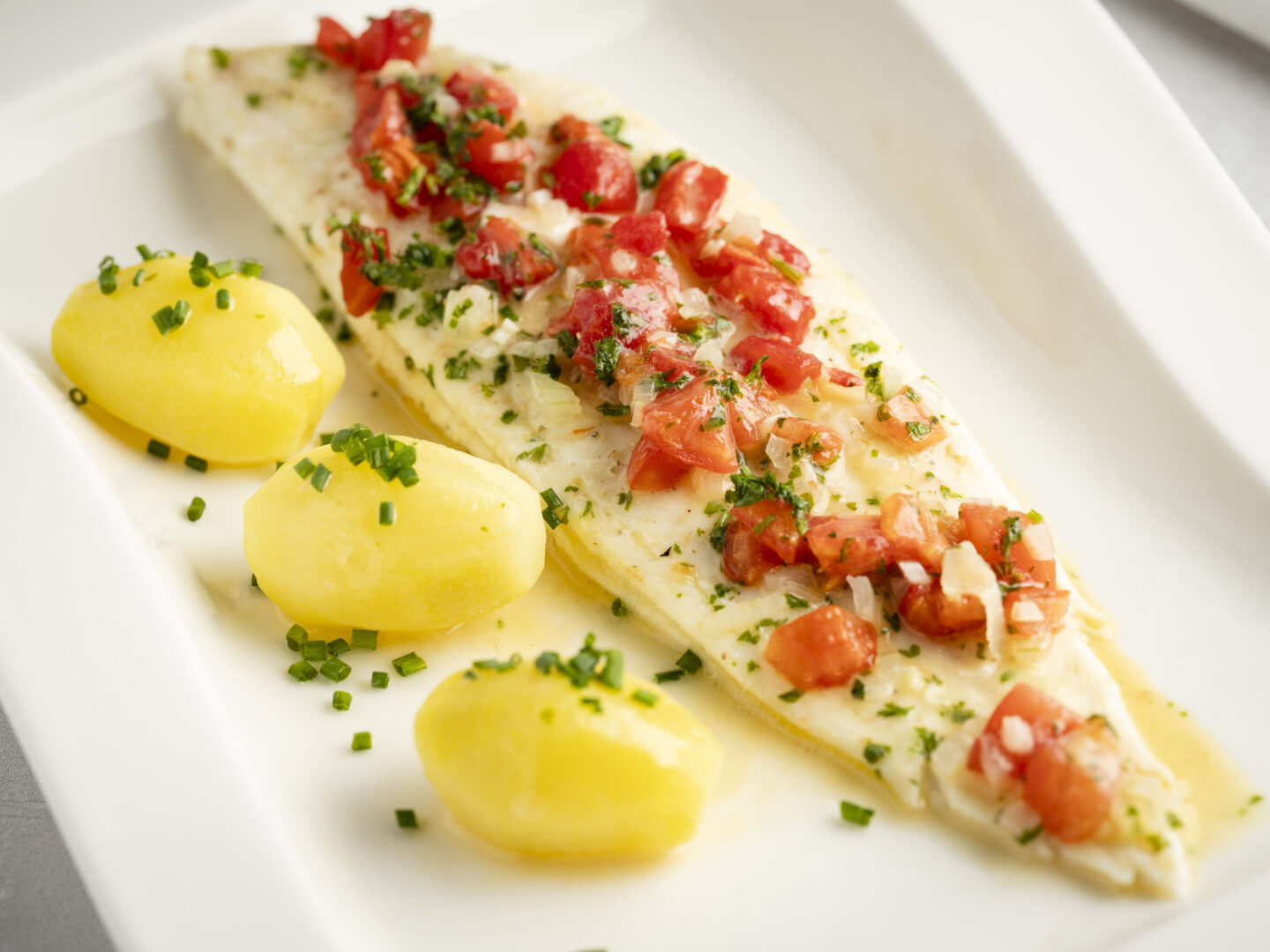
From Le Cordon Bleu to my kitchen: sole à la Dugléré
I recently attended a workshop at the renowned Le Cordon Bleu in their Hôtel de la Marine studio, located in the heart of Paris on Place de la Concorde. The menu featured turbot à la Dugléré with Champagne, lemon gnocchi and young spinach.
After taking my place at the workstation and meeting the chefs, who were conducting the workshop in both French and English, we got to work. It was an afternoon full of cooking, tasting and, above all, learning. The chefs shared their secrets, techniques and insights with infectious enthusiasm.
Back home, I decided to recreate the dish, this time using sole as Adolphe Dugléré himself would have done in the 19th century. It was an ode to French cuisine with a personal touch.
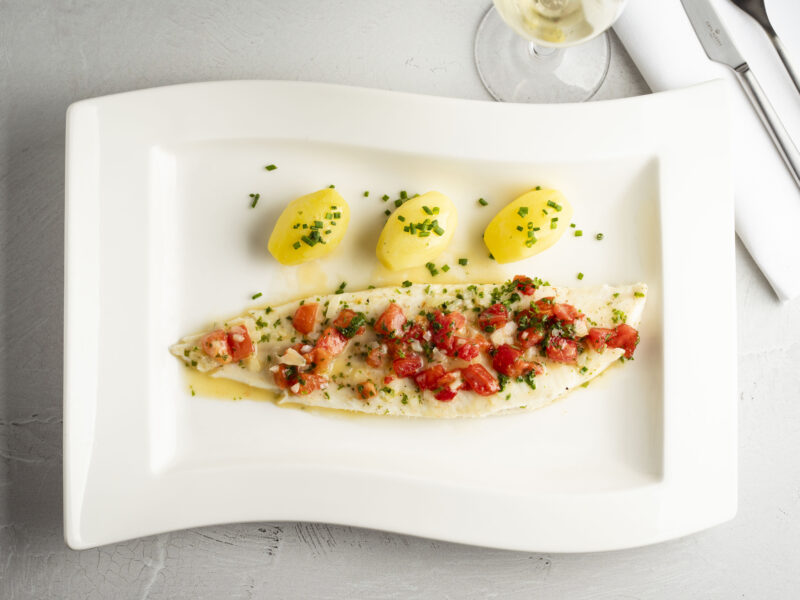
Cordon Bleu – from knighthood to culinary title of honour
The term 'cordon bleu' has a surprisingly aristocratic origin. In the 16th century, King Henri III of France established the highest order of knighthood in the kingdom, known as l'Ordre du Saint-Esprit. The members of this exclusive order, who were powerful princes and nobles, wore a striking sky-blue ribbon diagonally across their chest, resting on their right shoulder. This ribbon became the hallmark of their status, earning them the nickname 'les cordons bleus'.
These knights were not only politically influential, however; they were also renowned for their passion for fine dining. The banquets they organised were legendary, with lavishly laid tables, abundant dishes and an atmosphere of pure elegance. Thus, the term 'cordon bleu' became synonymous with culinary excellence.
When the French Revolution broke out, the order was abolished and, although it was briefly restored, disappeared for good in 1830. However, the association of the blue ribbon with gastronomic mastery remained, and this honorary title still sounds like a promise of quality today.
Le Cordon Bleu – where tradition and technique come together
What began as a cooking magazine in 1895 evolved into one of the world's most prestigious culinary institutes. French journalist Marthe Distel founded La Cuisinière Cordon Bleu to teach women the art of cooking, which was a revolutionary idea at a time when gastronomy was largely the domain of men. Cooking classes in Paris soon followed, and thus the first Cordon Bleu school was established. Today, Le Cordon Bleu has more than 50 schools worldwide where tradition, technique, and creativity converge in the kitchen.

Adolphe Dugléré – the chef behind the dish
Adolphe Dugléré, who studied under Antonin Carême, was a highly influential French chef in the 19th century. He cooked for the legendary 'Dinner of the Three Emperors' during the 1867 Paris Exposition Universelle. He is credited with creating such culinary classics as pommes Anna, soupe Germiny and soufflé à l'anglaise.
What is à la Dugléré?
A Dugléré-style fish dish is traditionally poached in a buttered oven dish with white wine, chopped onion, tomato and parsley. The resulting sauce is then reduced and enriched with fish velouté, before being thickened with butter to create a silky-smooth finish.
During my workshop at Le Cordon Bleu, I learnt a more refined version of this dish. Instead of white wine, we used a mixture of fish stock and Champagne for poaching. The aromatic base consisted of onion and shallot, and the sauce was reduced directly without the addition of fish velouté. Finally, it was thickened with butter and seasoned with chopped chives. And the chef's secret? An extra dash of Champagne as a finishing touch.
Recipe: Sole à la Dugléré with Champagne
I make this dish with sole, which was Adolphe Dugléré's favourite fish, according to the recipe I learnt at Le Cordon Bleu in Paris. A classic French dish, but with Champagne and a sauce to die for.
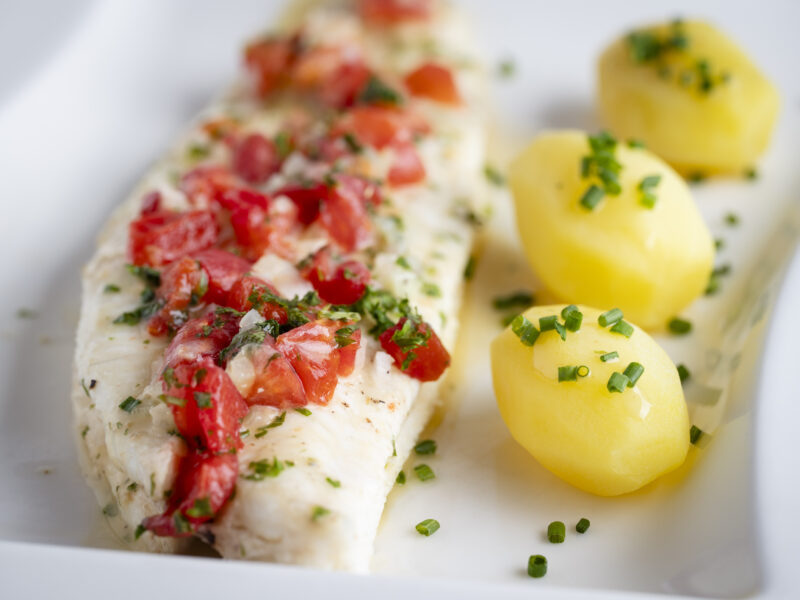
Ingredients for 2 people:
- 2 sole (size 3 or 4), skinned and headed
- 300 ml fish stock*
- 1 onion
- 1 shallot
- 2 tomatoes
- A few sprigs of parsley
- 50 ml Champagne plus 1 tablespoon for the sauce
- 40 g butter
- 4 sprigs of chives
- Salt and pepper
For the fish stock:
- 400 g fish trimmings (bones and head)
- 1 knob of butter
- 1 onion
- 1 shallot
- 6 white mushrooms
- 1 bouquet garni
- 1 clove
-
Step 1: make the fish stock
Rinse the fish scraps and leave them to soak in ice-cold water for an hour. Finely chop the onion and shallot and slice the mushrooms.
Melt the butter in a saucepan and gently sweat the fish scraps (suer) without browning them. Add the onion, shallot, clove and bouquet garni, then simmer briefly. Then add the mushrooms and simmer briefly again.
Pour in enough water to just cover the fish. Skim off any foam as soon as the water starts to heat up. Bring to the boil, then reduce the heat and simmer gently for 25 minutes. Turn off the heat, cover the pan and leave the fumet to infuse.
Bouquet garni:
A bundle of herbs tied together with kitchen string, consisting of a piece of green leek, a sprig of thyme, parsley, a bay leaf and a sprig of green celery.
Tip: Don't have time to make your own fumet? Use a high-quality ready-made fish stock.
![Zeetong Duglere 00157]()
-
Step 2: prepare the fish
Preheat the oven to 160°C (fan oven).
Finely chop the onion and shallot. Peel the tomatoes by immersing them in boiling water for 10 seconds, then remove the seeds and chop into a brunoise. Finely chop the parsley and chives.
Rub half the butter into an ovenproof dish. Season the sole with salt and pepper, place it in the dish, then spread the onion, shallot, tomato and parsley over the fish. Strain the fish stock and pour it over the fish. Add the champagne.
-
Step 3: make the papillote
Cut a piece of baking paper to fit your oven dish or pan. Fold it into a circle or rectangle large enough to completely cover the fish. Butter one side and place it on top of the fish. This will ensure the fish cooks gently and evenly.
-
Step 4: poaching the fish
Place the dish in the oven and poach the fish for 10 minutes until the flesh easily separates from the bone. Remove the dish from the oven and carefully take the fish out. Keep it warm under foil.
-
Step 5: finishing the sauce
Reduce the poaching liquid to about a third of its original volume. Add the remaining butter, a knob at a time, whisking continuously until a creamy sauce is formed. Finish with a tablespoon of champagne, then check the seasoning. Add a pinch of salt or a twist of pepper if necessary.
-
Step 6: Serving
Fillet the sole and arrange the fillets on a preheated plate. Spoon some of the sauce over the fish, serving the rest separately in a small bowl.
Is delicious when served with: braised spinach, broccoli, leeks, fennel or green beans. Mashed potatoes or lemon gnocchi, as served at Le Cordon Bleu, are the perfect accompaniment. And don't forget the crusty bread to mop up the last of the sauce!
![Zeetong Duglere 1484]()
